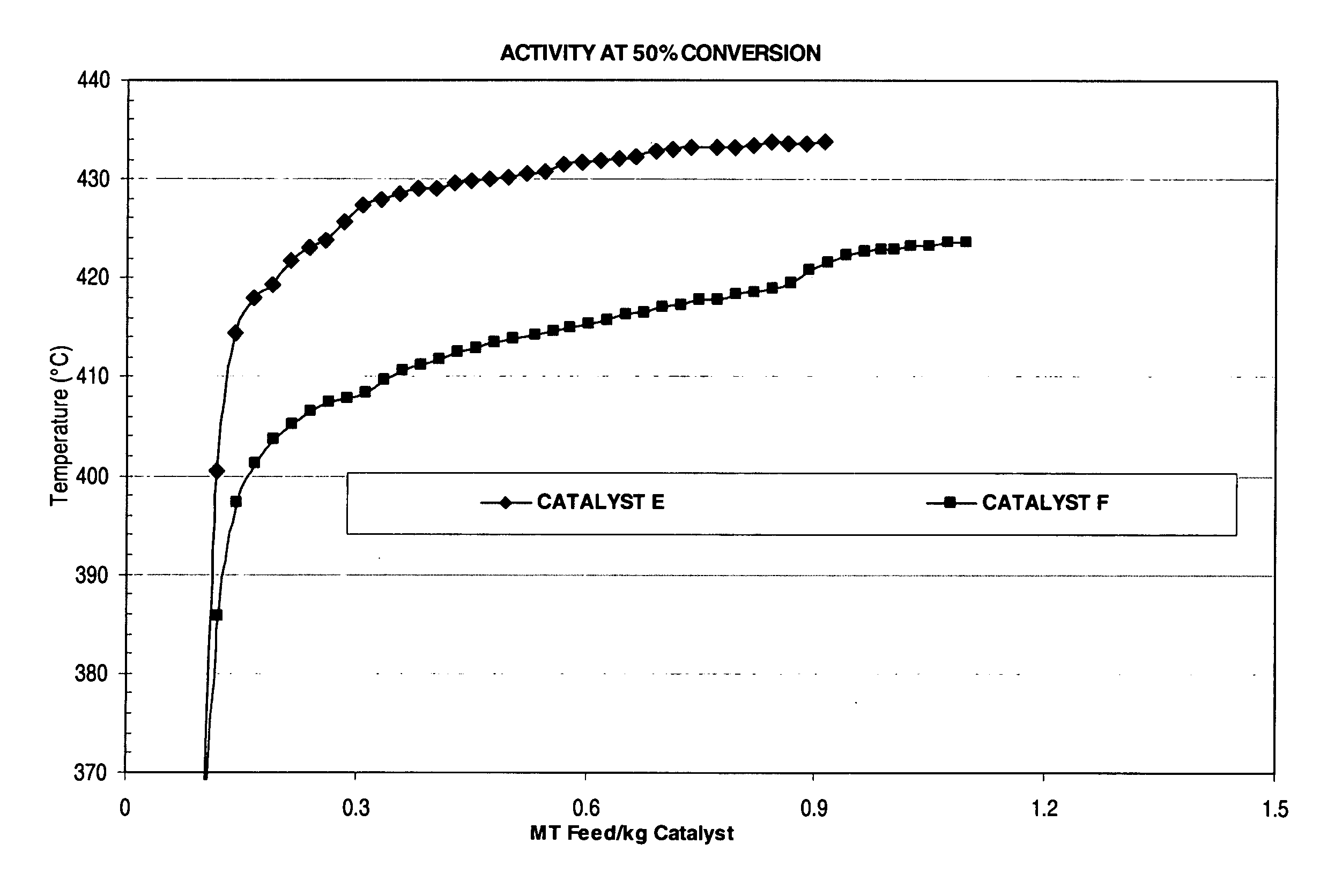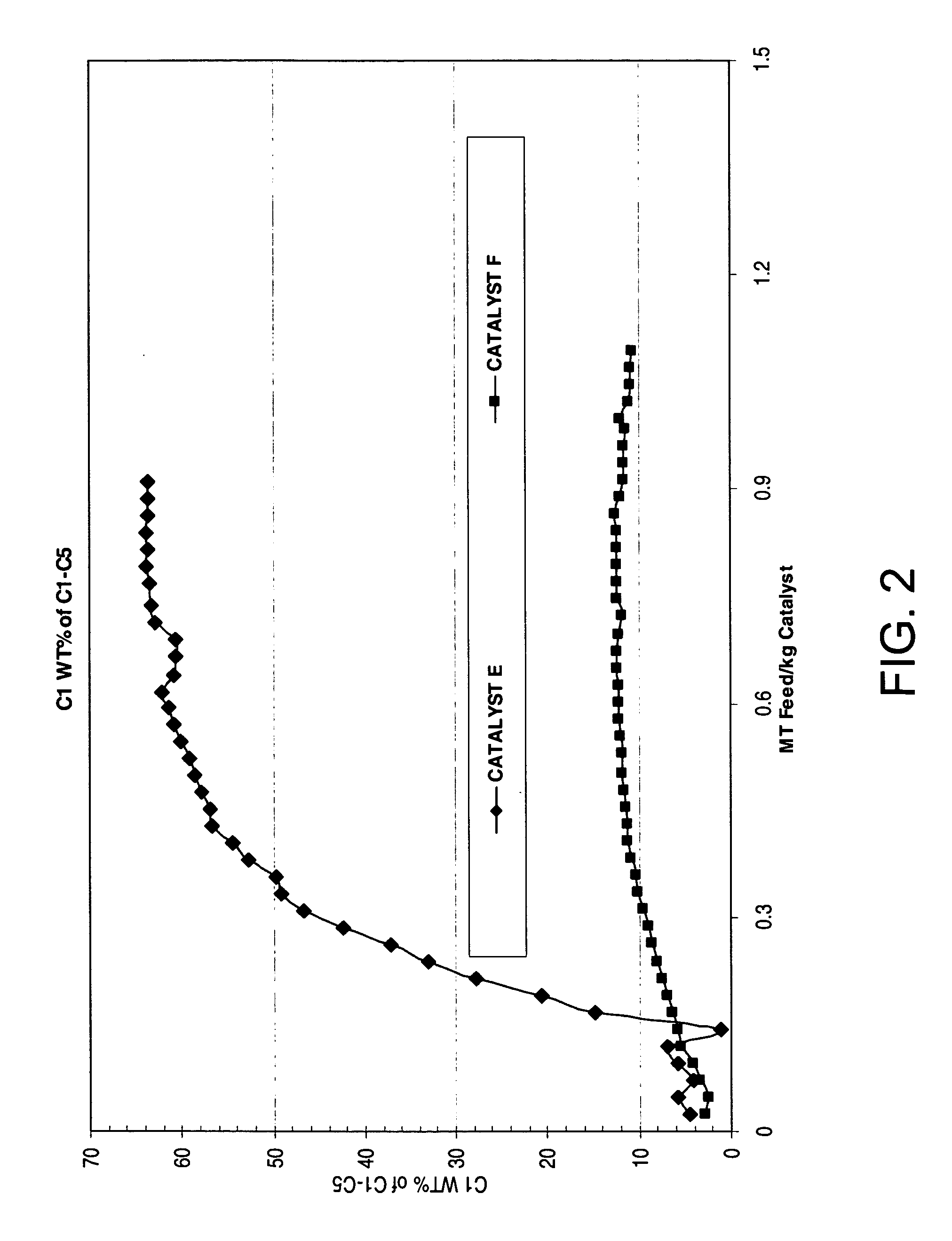Catalyst treatment useful for aromatics conversion process
a catalyst and aromatic technology, applied in the field of catalytic hydrocarbon conversion, can solve the problems of difficulty in separation or conversion, the effect of sulfur on methane yield has not been disclosed, and the problem of high methane production associated with rhenium containing catalysts has not been recognized in the art, so as to reduce methane yield and reduce methane production
- Summary
- Abstract
- Description
- Claims
- Application Information
AI Technical Summary
Problems solved by technology
Method used
Image
Examples
example 1
[0038]Samples of catalysts comprising mordenite were prepared for comparative pilot-plant testing by the forming process called extrusion. Typically, 2500 g of a powder blend of 25 wt-% alumina (commercially available under the trade names Catapal™ B and / or Versal™ 250) and 75 wt-% mordenite (commercially available under the trade name Zeolyst™ CBV-21A) was added to a mixer. A solution was prepared using 10 g nitric acid (67.5 wt-% HNO3) with 220 g deionized water and the solution was stirred. The solution was added to the powder blend in the mixer, and mulled to make dough suitable for extrusion. The dough was extruded through a die plate to form cylindrically shaped (0.08 cm diameter) extrudate particles. The extrudate particles were calcined at about 565° C. with 15 wt-% steam for 2 hours.
[0039]Two different catalysts were finished using the extrudate particles and an evaporative impregnation with rhenium metal by using an aqueous solution of ammonium perrhenate (NH4ReO4). The im...
example 2
[0040]Catalysts E and F were tested for aromatics transalkylation ability in a pilot plant using an aromatics feed blend of C7, C9, and C10 aromatics to demonstrate effectiveness of catalyst presulfiding in controlling methane production when producing C8 aromatics. The test consisted of loading a vertical reactor with catalyst and contacting the feed at 2860 kPa abs (400 psig) under a space velocity (WHSV) of 2 hr−1 and hydrogen to hydrocarbon ratio (H2 / HC) of 4. A conversion level of about 50 wt-% of feed aromatics was achieved. FIG. 1 shows the results on catalyst activity as measured by a weighted average bed temperature, and FIG. 2 shows the results on catalyst methane production as a weighted percentage of light ends that includes C1 through C5 compounds.
[0041]The data showed that a substantially-dry, high-temperature reduction treatment of a rhenium containing catalyst served to reduce the methane production during an aromatics transalkylation reaction. Accordingly, the reduc...
PUM
| Property | Measurement | Unit |
|---|---|---|
| temperature | aaaaa | aaaaa |
| time | aaaaa | aaaaa |
| temperature | aaaaa | aaaaa |
Abstract
Description
Claims
Application Information
 Login to View More
Login to View More - R&D
- Intellectual Property
- Life Sciences
- Materials
- Tech Scout
- Unparalleled Data Quality
- Higher Quality Content
- 60% Fewer Hallucinations
Browse by: Latest US Patents, China's latest patents, Technical Efficacy Thesaurus, Application Domain, Technology Topic, Popular Technical Reports.
© 2025 PatSnap. All rights reserved.Legal|Privacy policy|Modern Slavery Act Transparency Statement|Sitemap|About US| Contact US: help@patsnap.com



